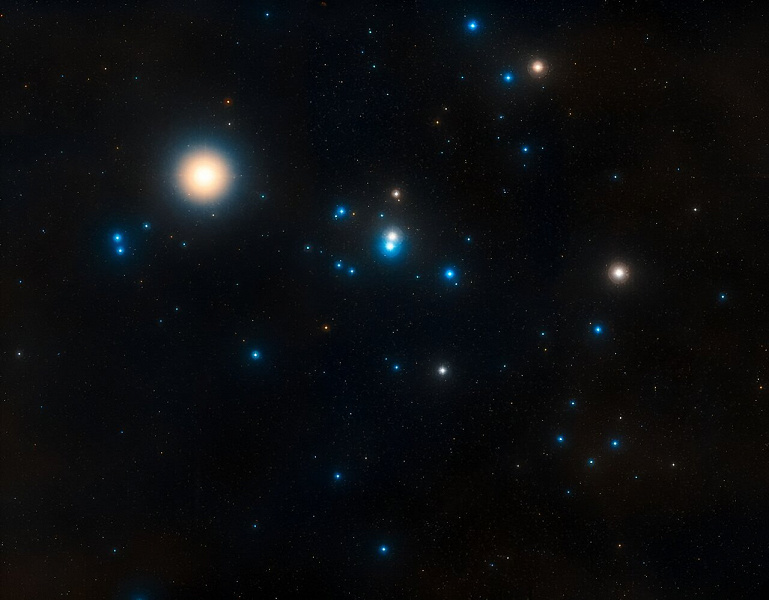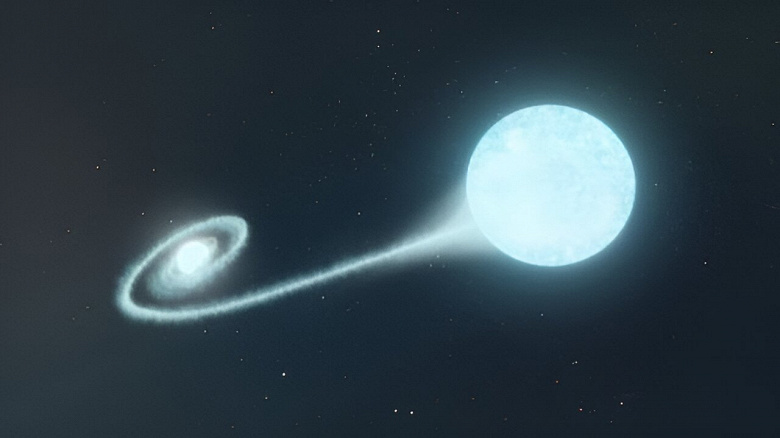The absence of white dwarfs in the Hyades cluster is of interest to astronomers, and this case helps reconstruct the history of the cluster
The Hyades star cluster is located about 153 light years away. At such a short distance it is visible to the naked eye in the constellation Taurus. THIS proximity makes it easier for professional astronomers to observe than many other objects. The Hyades cluster contains many stars with approximately the same age – about 625 million years, the same metallicity, and similar trajectories. But it lacks white dwarfs – there are only eight of them in the center of the cluster.
The Hyades cluster is quite common. His research greatly helps in understanding star clusters. But such a feature as the almost complete absence of white dwarfs puzzles astronomers.
A new study has found one “escapee” from the cluster. This is a white dwarf whose mass is approaching the limiting value for this type of star. The study is called “A White Dwarf That Was Able to Escape the Hyades Star Cluster.”

An extremely massive white dwarf was able to escape the Hyades star cluster
Clusters such as the Hyades are weakly gravitationally bound, and over time they lose stars through their interactions with gas clouds, other clusters, and between the cluster stars themselves. Study author David Miller of the Department of Physics and Astronomy at the University of British Columbia and his co-authors studied the phenomenon of the absence of white dwarfs in the Hyades to reconstruct the history of the cluster. If we can identify the stars that were expelled, especially white dwarfs in this case, then it is possible to reconstruct the history of the cluster.
The European Space Agency’s Gaia space telescope tracks more than 1 billion stars in the Milky Way, providing Miller and his colleagues with a huge amount of data. The team found three white dwarfs with trajectories indicating possible escape from the Hyades cluster. For two of them, the range of masses makes it unlikely that they originated in a cluster, but for the third object, it is possible.
“We estimate there is a 97.8% probability that the candidate is a true native of the Hyades”
White dwarfs have a mass comparable to the Sun, but their size is comparable to the Earth. They consist of degenerate matter and emit only residual thermal energy. This is the final state of about 97% of the stars in the Milky Way. Their mass is governed by the Chandrasekhar limit and at maximum can reach about 1.44 solar masses. Large white dwarfs are usually found in binary star systems and gain mass by pulling matter from a companion; such white dwarfs eventually explode in a type 1a supernova, and all their mass is dissipated.

The white dwarf that left the Hyades is called an ultramassive white dwarf. These have a mass of 1.10 or more solar masses. This is well below the Chandrasekhar limit, but well above the average mass of a white dwarf, which is about 0.6 solar masses. Such high-mass objects typically originate from two-parent stars in a binary system, where one star has “taken” material from the other, increasing its mass.
However, the Hyades ultramassive white dwarf has a mass of 1.317 solar masses and an age consistent with only one parent star. It appears to be the most massive white dwarf to come from a single progenitor.




